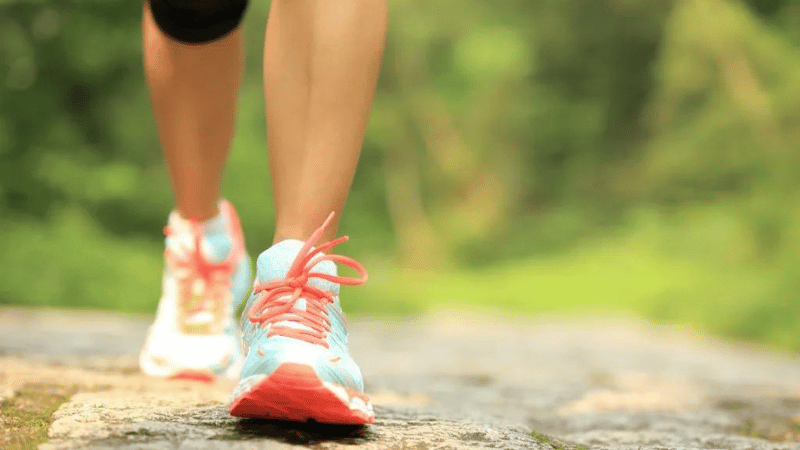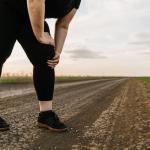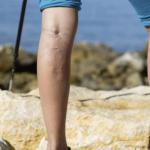
Walking is a low-impact exercise that helps with everything from heart to mental health. But did you know walking can also benefit your vein health?
Whether you take your dog for a walk every day, walk on a treadmill, or love to hike in the woods, getting those steps in is good for your vascular system. Once you know how much walking benefits your legs, you’ll be ready to lace up your shoes, grab a bottle of water, and head out the door. So, let’s look at what walking does for your veins and why it’s such an important exercise for your overall vascular health.
Walking Guide for Pre- & Post-Vein Treatment
How Walking Benefits Your Leg Veins
Is walking good for varicose veins? Does it help to prevent those frustrating calf cramps that wake you up at night? What about restless legs, dry skin, and swollen feet?
The answer to all of these questions is yes — walking does help.
Walking is hands down one of the best exercises for keeping your veins strong and healthy. It can help prevent the damage that leads to varicose veins, and by boosting blood flow, you can expect fewer vein symptoms. However, it’s important to note that while walking can contribute significantly to maintaining healthy veins, vein disease cannot simply go away without treatment. Seeking appropriate medical care and treatment is essential for managing and addressing vein issues effectively.
But that’s just scratching the surface. Here’s a detailed look at all of walking’s benefits.
1. Increases Circulation
As you walk, the contraction of your leg muscles aids in propelling blood upwards toward the heart through your leg veins. Additionally, the combination of body movement and deeper breathing during walking facilitates smoother blood circulation throughout your body.
2. Strengthens Calf Muscles
Walking strengthens the muscles in your legs. These stronger muscles support your veins by helping them pump blood back to the heart.
3. Boosts Heart Health
Walking increases your heart rate, which helps to increase circulation and lower blood pressure. Exercise, in general, also removes stress hormones in the body that put pressure on the heart.
4. Lowers Stress
When you’re stressed, blood pressure increases, which can stretch and damage your vein walls and the delicate valves in your veins.
Walking helps by increasing blood flow to the brain, triggering the release of endorphins and serotonin, feel-good hormones that lift mood and promote relaxation.
5. Burns Calories
Being overweight is one of the main risk factors for developing varicose veins.
Walking also supports vein health by helping you maintain a healthy weight. The average person can burn between 135 and 189 calories by walking for 30 minutes.
6. Encourages Balanced Hormone Levels
Walking offers significant benefits, especially for women. Fluctuating estrogen and progesterone levels can affect blood flow, potentially leading to vein damage. While hormonal changes like those during pregnancy and menopause are unavoidable, regular walking can help maintain balanced hormone levels, reducing the risk of vein damage and the development of varicose veins.
7. Reduces Risk of Chronic Diseases
Getting out and moving your legs on a trail, around a park, or even around your neighborhood can help your body maintain healthy blood sugar and blood pressure levels. That, in turn, lowers your risk for major illnesses like heart disease and diabetes.
On the other hand, high blood pressure and high blood sugar can damage your veins. So, by walking, you can prevent vein damage and help to prevent chronic health problems that could further harm your veins.
8. Makes Maintaining an Exercise Routine a Breeze
Walking is an accessible form of exercise for maintaining vein health. It requires no special equipment or class sign-ups. Walking solo or with friends is a straightforward way to increase physical activity and support vein health. If you’re looking to initiate a healthier lifestyle for your veins, walking is an ideal starting point.
Do You Have Varicose Veins? Take Our Symptom Quiz
Tips for Using Walking to Improve Vein Health
Want to get even more out of your walks? Here are a few helpful tips to help you stay healthy and feel energized.
- Wear supportive shoes. Your sneakers should have enough cushion to absorb shock while being lightweight and comfortable.
- Be consistent. Aim for 30 minutes, five days a week. If you’re just getting started, aim for 15 minutes a day. Then, increase your walks by five minutes a week until you reach half an hour.
- Drink plenty of water. A normal adult should drink between six and eight glasses of water daily. Fill your bottle before your workout and drink while you move to stay hydrated.
- Stay flexible. A few minutes of light stretching can help to prevent muscle soreness. Stretching is also useful for getting your blood flowing before you exercise.
Want to Learn More About Keeping Your Veins Healthy?
Can Running Cause Varicose Veins?
If you enjoy walking, you might want to take it to the next level and start jogging or running.
Running burns more calories and can help strengthen your lungs and heart. After a good run, your brain might also release more endorphins, lifting your mood for the rest of the day.
But running is also a more intense exercise, and it might not be a good fit for everyone, especially if you already have varicose veins.
Running won’t cause varicose veins. Both spider veins and varicose veins are caused by vein disease, a condition that develops when your vein walls and valves become damaged. They’re not caused by running.
However, if you already have diseased veins, you might notice that your symptoms increase after a run. You might feel an increase in leg pain or swelling. Your veins also might become more visible temporarily.
Wearing poorly fitting shoes and pounding on a hard surface, like concrete or pavement, can exacerbate this problem even more.
Walking is a low-impact activity, so you’re likely to notice an improvement in your symptoms rather than more discomfort when you walk. That’s another reason why it’s such a good choice for supporting your vascular health.
Keep Your Veins Healthy
Even if you already have vein disease, there is good news. You can get treatment for your varicose veins and other symptoms with a quick, non-surgical procedure. After treatment, you’ll notice less pain, swelling, and other uncomfortable symptoms. Your varicose veins and spider veins will also diminish, so you can walk or run in shorts without worrying about how your legs look.
At USA Vein Clinics, our doctors specialize in treating varicose veins and spider veins using minimally invasive procedures. We can also give you a vein health check-up, so you can get the treatment you need to restore your vein health and enjoy a healthy active lifestyle. Schedule a consultation with one of our specialists to get started.
Sources:
Harvard Health Publishing. “Calories burned in 30 minutes for people of three different weights.” March, 8, 2021.





